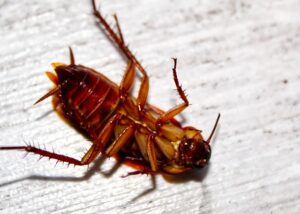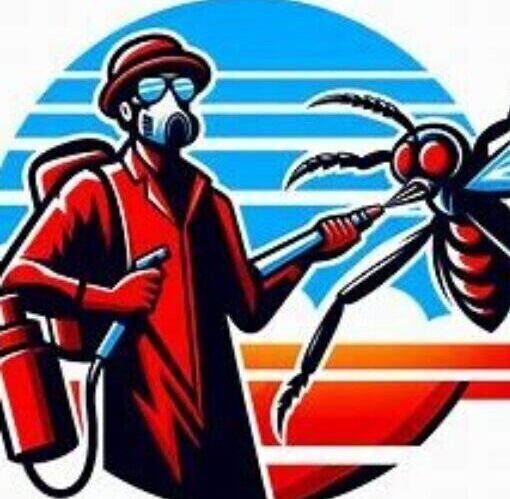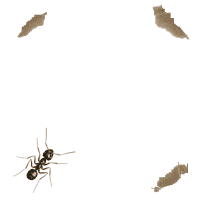Tips To Control Indoor Pest in the Winter

During the winter months, you can expect to see less pest activity but that doesn’t mean they are no longer there but are hiding and taking shelter from freezing temperatures. We should be on the alert because you don’t know when they may come out of hiding. It is therefore necessary to practice good sanitation while implementing control methods, for example, the application of pesticides. The application of pesticides will act as a barrier or even kill pests that come out of hiding.
The nature of pests and rodents is to overwinter in leaf litter, garden debris, overgrown plants, clutter, turf, trash, sheds, garages even moving indoors taking cover in cupboards, pantries, basements, crawlspaces, and any other area of the home waiting patiently for the warmer season to return only to emerge from these hiding places to be a nuisance. The damages that some pests cause can amount to hundreds or even thousands of dollars, don’t let that be you, this guide offers much help to protect your home from these pests during the colder months.
When Should I Make Spray Applications?
The best time to spray is late winter, the cold temperatures affect the bodies of insect pests causing them to use the energy stored in their bodies. Because of limited food bugs and rodents must slow down to preserve their energy.
Practice Good Sanitation Year-Round to Pest Pest-Proof your Home
During the winter months continue to practice good sanitation because this will pest-proof your home, here are some good pest management practices.
- Make sure that your outdoor trash storage area is always kept clean, with no trash or garbage on the ground.
- Trash containers should always have tight-fitted lids to keep out mice, rats, flies, and other rodents.
- All leaky outdoor pipes and faucets including irrigation pipes should be repaired.
- Clean up fall leaves and other debris.
- Remove and discard unused old boxes and papers where roaches can hide.
- Store firewood as far as possible or off the ground on shelves or racks that will eliminate hiding places.
- Remove rotting leaves from gutter window wells.
- Once your pet finishes eating rinse or wash your pet’s bowl.
- Keep pet foods properly sealed.
- Remove all fallen fruits and vegetables from the ground.
- Make sure that your indoor living area is clutter-free.
- Indoor trash cans should have a tightly fitted lid.
- After preparing foods remove all food particles from the stove including cleaning grease, food particles should also be swept up from the kitchen floor and areas where foods are consumed, clean down kitchen countertops, and wipe or mop up any water spills including juice, tea, soft drinks, etc.…
- Fix indoor leaky pipes and faucets.
The Importance of Exclusion
- Make sure that windows and doors fit securely inside the frames to discourage entry points.
- Repair damaged door and window screens.
- Repair damaged door sweeps or replace them.
- Seal cracks around doors and windows with caulk.
- Seal cracks and crevices in the foundation with caulk.
- Holes where pipes enter your home should be sealed with caulk, foam, or sealants to close gaps.
- Place mesh screens over floor drains, vents, and windows.
- Caulk holes around baseboards.
- Make sure to trim back plants that make contact with your home because insects use the branches and limbs that make contact with building structures as bridges to seek entry points to get indoors.
What Insect Pest should I Spray for During the Winter months?
Here are a few pests that can be controlled during the colder season.

- Mosquitoes.
- Rats and mice.
- Bed bugs.
- Spiders.
- American cockroaches, German cockroaches, Oriental cockroaches, and Smokey brown cockroaches.
- Ants.
- Drywood termites, dampwood termites and subterraean termites.
- Sting bugs.
- Fleas.
- Pantry bugs.
- Flies.
- Raccoons.
- Ticks
- House centipede.
- Silverfish.
- Fruit flies.
Additional Information
- Before pesticide application always read and follow the manufacturer’s directions on the label for safety and the best results, also always wear proper safety gear for protection.
Where should I make Spray Applications?
- Application should be made in areas where pests are seen and around your shed or garage.
- Apply insecticides around door and window frames.
- Closets
- Basements.
- Pantries
- Make spray applications around the perimeter of your building foundation in a circular pattern.
How Should I Make Spray Applications?
- Never spray with the wind because it will blow in your face, always spray with your back against the wind.
Conclusion
Pest may slow down but they will not take breaks, though they lay dormant they will still if possible size the moment for a free meal or to use your home as a haven from the freezing winter chill if given the opportunity so make sure that your home is pest-proof during the winter month. Keep pests out where they belong by following the steps laid out in this guide, you will be happy with the results as you create a pest-free zone by winning the war on those critters.











Thanks for this comprehensive guide, Norman!
As someone who recently dealt with an unexpected winter pest situation, I can’t stress enough how crucial that point about trimming back plants from the house is. I learned this the hard way when some crafty spiders used our ivy as a “bridge” to get inside. I’m curious though, you mentioned that winter is the best time to spray because pests use stored energy. Wouldn’t it be more effective to spray in late fall before they find their winter hiding spots? Would love to hear your thoughts on this timing strategy, and what others in colder climates have found most effective for prevention versus treatment.
Eric
Pest control should be carried out year-round to maintain a healthy garden, whether using organic or non-organic pesticides or gardening without pesticides. Pest management is an ongoing process. Some pests or the majority may be treated but there are a few that will remain untreated and then there is the matter of the unhatched generation that must be treated as well. So the point here again is dealing with those pest that was not treated and are overwintering.
Hello Norman!
This article provides such practical advice for keeping pests at bay indoors! I appreciate how it balances preventative measures with safe pest control options—something that’s so important for families and pet owners alike.
I’m curious, do you find that natural remedies, like essential oil sprays or diatomaceous earth, are just as effective as chemical treatments for long-term prevention? Also, do certain types of pests require more aggressive measures, or is a consistent prevention strategy enough to manage most infestations?
Thanks for breaking this down so clearly—it’s definitely inspired me to rethink some of my indoor pest control habits!
Angela M 🙂
Natural remedies can work although in some cases it may take a longer time, if you have a serious outbreak or infestation on hand that requires immediate attention then a more aggressive approach may be needed however caution and care should still be taken or considered first.
Great tips for keeping pests at bay during the winter months! It’s true that pests may slow down, but they don’t completely disappear, so it’s wise to stay vigilant.
I particularly like the emphasis on good sanitation and exclusion methods as they’re proactive steps that can prevent infestations before they start.
Thanks for the comprehensive guide—keeping our homes pest-free is definitely a year-round job!
You are welcome and I am so happy to help, thanks for stopping by and commenting!